


|
Calatrava won the competition for the design of a station for visitors to the 1998 Expo. He transformed this former industrial wasteland into an urban renewal project and in the process created an important station not only for the World's Fair visitors but travelers on intercity trains, bus lines, and metro lines. In addition, the Expo's Portuguese Pavilion by Alvaro Siza is planned to house the city government of Lisbon. Thus, a new city center is in the process of creation.
| |
Wave-like formsLike much of Calatrava's architecture, which suggests organic or natural shapes, the wave-like forms of the bus platforms allude to the nearby sea. |
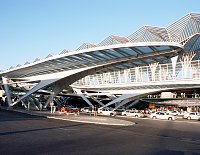
|
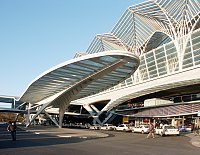
|

|

|
The bus platformsStairways up from the bus platforms lead to the main station. |
Wave-like roofs |

|

|
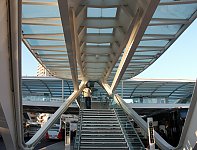
|

|
The bus platformsStairways up from the bus platforms lead to the main station. |
The elevated hallway leading to the central station | ||
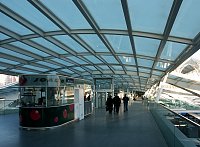
|
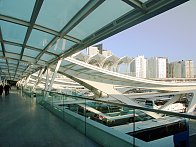
|

|
 Click here to return to index of art historical sites.
Click here to return to index of art historical sites.
 Click here to return to index of artists and architects.
Click here to return to index of artists and architects.
 Click here to return to chronological index.
Click here to return to chronological index.
 Click here to see the home page of Bluffton University.
Click here to see the home page of Bluffton University.
